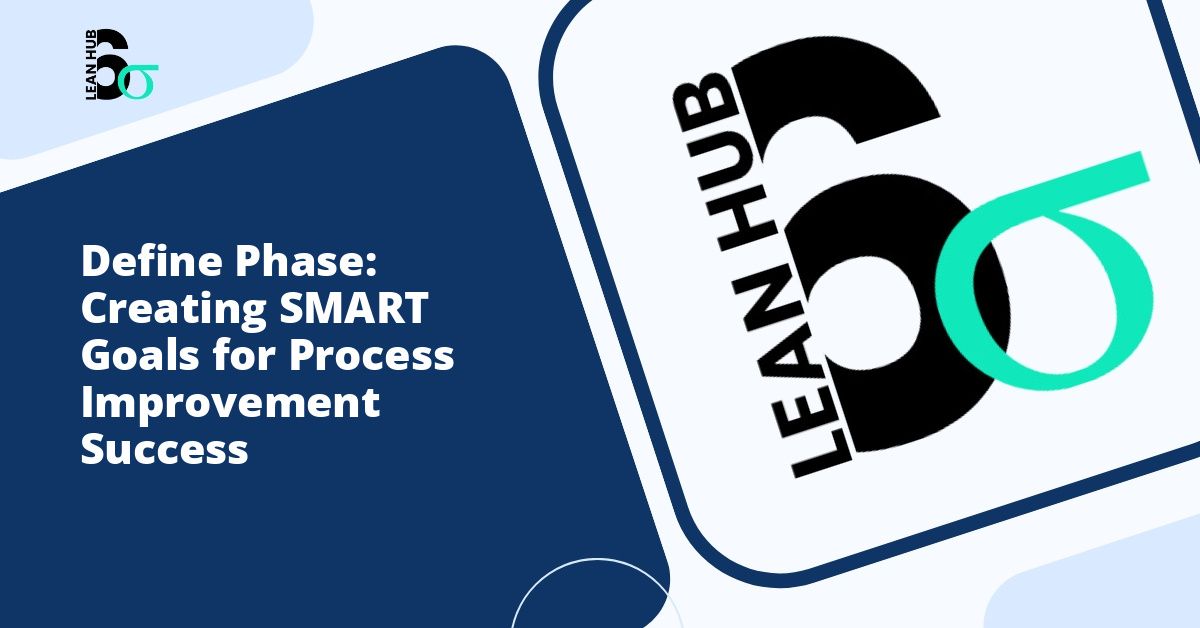The journey toward process improvement and operational excellence begins with a clear understanding of the problem at hand. In the world of Lean Six Sigma, this critical first step is known as the Define phase. Whether you are new to process improvement methodologies or looking to strengthen your foundation, understanding this initial phase is essential for project success.
This comprehensive guide will walk you through everything you need to know about the Define phase, its importance, key components, and how to execute it effectively in your organization. You might also enjoy reading about How to Facilitate a SIPOC Workshop: A Complete Step-by-Step Guide for Team Leaders.
What Is the Define Phase?
The Define phase is the first stage of the DMAIC (Define, Measure, Analyze, Improve, Control) methodology used in Lean Six Sigma projects. It serves as the foundation upon which all subsequent phases are built. During this critical stage, project teams establish the scope, goals, and boundaries of their improvement initiative. You might also enjoy reading about How to Conduct Customer Interviews for Six Sigma VOC Analysis: A Complete Guide.
Think of the Define phase as setting the GPS coordinates before embarking on a journey. Without clear direction and destination, even the most talented team can waste valuable time and resources traveling in the wrong direction. This phase ensures everyone understands what problem needs solving, why it matters, and what success looks like. You might also enjoy reading about CTQ Requirements: How to Identify What Really Matters to Customers.
Why the Define Phase Matters
Many organizations rush through or entirely skip the Define phase in their eagerness to implement solutions. This approach typically leads to project failure, wasted resources, and team frustration. The Define phase matters for several compelling reasons:
- Establishes Clear Objectives: It creates a shared understanding of what the project aims to achieve and prevents scope creep.
- Aligns Stakeholders: It brings together diverse perspectives and ensures everyone works toward the same goals.
- Prevents Waste: It helps teams avoid solving the wrong problem or addressing symptoms rather than root causes.
- Secures Resources: It provides the justification needed to allocate time, budget, and personnel to the project.
- Sets Success Criteria: It establishes measurable targets that determine whether the project has achieved its intended outcomes.
Key Components of the Define Phase
A thorough Define phase includes several essential elements that work together to create a solid project foundation. Understanding these components helps ensure nothing critical gets overlooked.
Project Charter
The project charter serves as the official authorization and roadmap for your improvement initiative. This document captures the essential information that guides the project team throughout all phases. A comprehensive project charter typically includes:
- Problem statement describing the issue in clear, specific terms
- Project scope outlining what is included and excluded
- Business case explaining why the project matters
- Goal statement defining what success looks like
- Timeline establishing key milestones and deadlines
- Team members and their roles
- Resources required for project completion
Voice of the Customer (VOC)
Understanding customer needs, expectations, and pain points is fundamental to the Define phase. The Voice of the Customer represents the expressed and unexpressed requirements of those who receive the output of your process. Gathering VOC data helps ensure your improvement efforts address real needs rather than assumed problems.
Methods for collecting VOC include surveys, interviews, focus groups, complaint analysis, and direct observation. This information becomes invaluable when prioritizing which problems to solve and how to measure success.
SIPOC Diagram
The SIPOC (Suppliers, Inputs, Process, Outputs, Customers) diagram provides a high-level view of the process under investigation. This tool helps teams recognize phase boundaries and understand how different elements interact within the system.
Creating a SIPOC diagram forces teams to think through the entire process flow, identify key stakeholders, and understand dependencies. This visualization tool proves particularly valuable when communicating with stakeholders who may not be intimately familiar with the process details.
Stakeholder Analysis
Identifying and understanding stakeholders is crucial for project success. Stakeholders include anyone who affects or is affected by the project. During the Define phase, teams should identify all relevant stakeholders, assess their level of influence and interest, and develop appropriate engagement strategies.
Failing to properly engage stakeholders can derail even well-planned projects. Some stakeholders may resist changes, while others can provide crucial support and resources. Understanding these dynamics early allows teams to proactively address concerns and build coalitions of support.
How to Recognize Phase Boundaries
One challenge beginners face is knowing when to transition from the Define phase to the Measure phase. Several indicators help teams recognize phase completion:
- The project charter has been completed and approved by sponsors
- All team members clearly understand the problem and project goals
- Stakeholders have been identified and engaged
- The scope has been clearly defined with agreed-upon boundaries
- Success metrics have been established
- The business case demonstrates clear value
- Leadership has authorized resources and timeline
Moving forward prematurely can undermine the entire project, while lingering too long in the Define phase can drain momentum and resources. The key is ensuring all critical elements are sufficiently addressed without pursuing perfection.
Common Mistakes to Avoid
Even experienced practitioners can stumble during the Define phase. Being aware of common pitfalls helps teams navigate this stage more successfully.
Vague Problem Statements
Problem statements that lack specificity make it impossible to measure success. Statements like “customer service needs improvement” provide no actionable direction. Instead, effective problem statements include specific metrics, locations, and timeframes.
Solution Jumping
Teams often jump to solutions before fully understanding the problem. This tendency, while natural, can lead to implementing fixes that address symptoms rather than root causes. The Define phase should focus exclusively on understanding and framing the problem, not proposing solutions.
Scope Creep
Without clear boundaries, projects can expand beyond manageable limits. The Define phase should establish what is specifically included and excluded from the project scope. This clarity prevents teams from being pulled in too many directions.
Inadequate Stakeholder Engagement
Failing to identify and engage key stakeholders early creates resistance and obstacles later. Taking time during the Define phase to build relationships and communicate effectively pays dividends throughout the project lifecycle.
Practical Steps to Execute the Define Phase
Understanding theory is important, but knowing how to practically execute the Define phase makes the difference between success and failure.
Step 1: Assemble Your Team
Identify team members with relevant expertise, authority, and availability. Include people who understand the process, have analytical skills, and can implement changes. Ensure team composition reflects diverse perspectives.
Step 2: Develop the Project Charter
Work collaboratively to complete all sections of the project charter. Involve stakeholders in reviewing and refining the document. Obtain formal approval from project sponsors before proceeding.
Step 3: Gather Voice of Customer Data
Use multiple methods to collect customer feedback and requirements. Analyze this information to identify patterns, priorities, and critical-to-quality characteristics.
Step 4: Create Process Maps
Develop SIPOC diagrams and other high-level process maps to establish shared understanding. Use these visual tools to identify boundaries and key process elements.
Step 5: Conduct Stakeholder Analysis
Create a comprehensive list of stakeholders. Assess their influence, interest, and potential impact on the project. Develop communication and engagement strategies for each stakeholder group.
Step 6: Review and Validate
Before moving to the Measure phase, review all Define phase deliverables with your team and sponsors. Ensure everyone agrees on the problem, scope, and goals. Make adjustments based on feedback.
Conclusion
The Define phase represents the critical foundation for successful Lean Six Sigma projects. By investing adequate time and effort in clearly defining the problem, establishing scope, engaging stakeholders, and creating a comprehensive project charter, teams set themselves up for success in subsequent phases.
Remember that the goal is not perfection but sufficient clarity to move forward confidently. As you gain experience, your ability to efficiently execute the Define phase will improve, allowing you to recognize phase requirements and transitions more quickly.
Whether you are leading your first improvement project or supporting organizational transformation, mastering the Define phase is an investment that pays dividends throughout your continuous improvement journey. Take the time to do it right, and the rest of your DMAIC project will flow much more smoothly.








